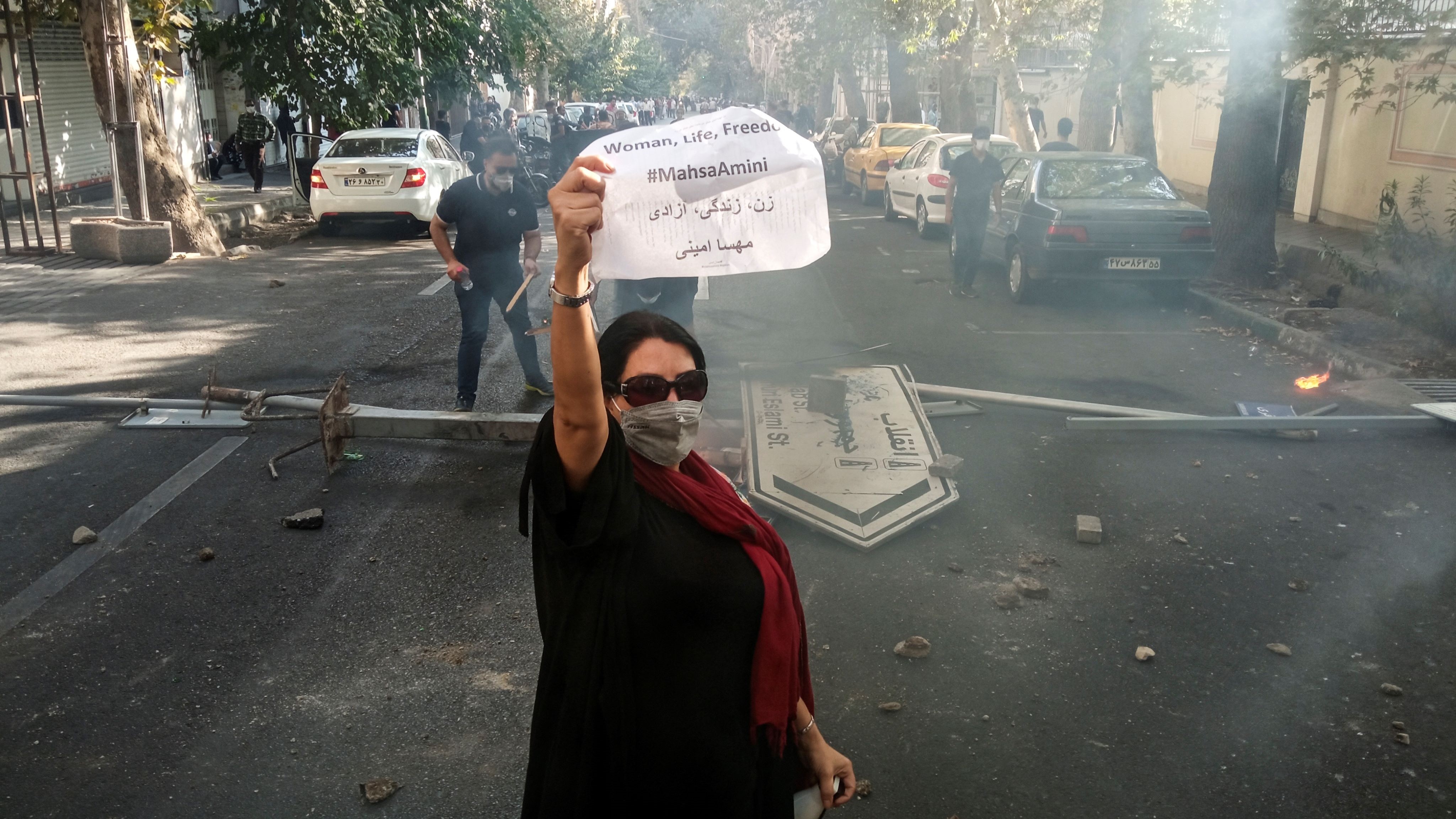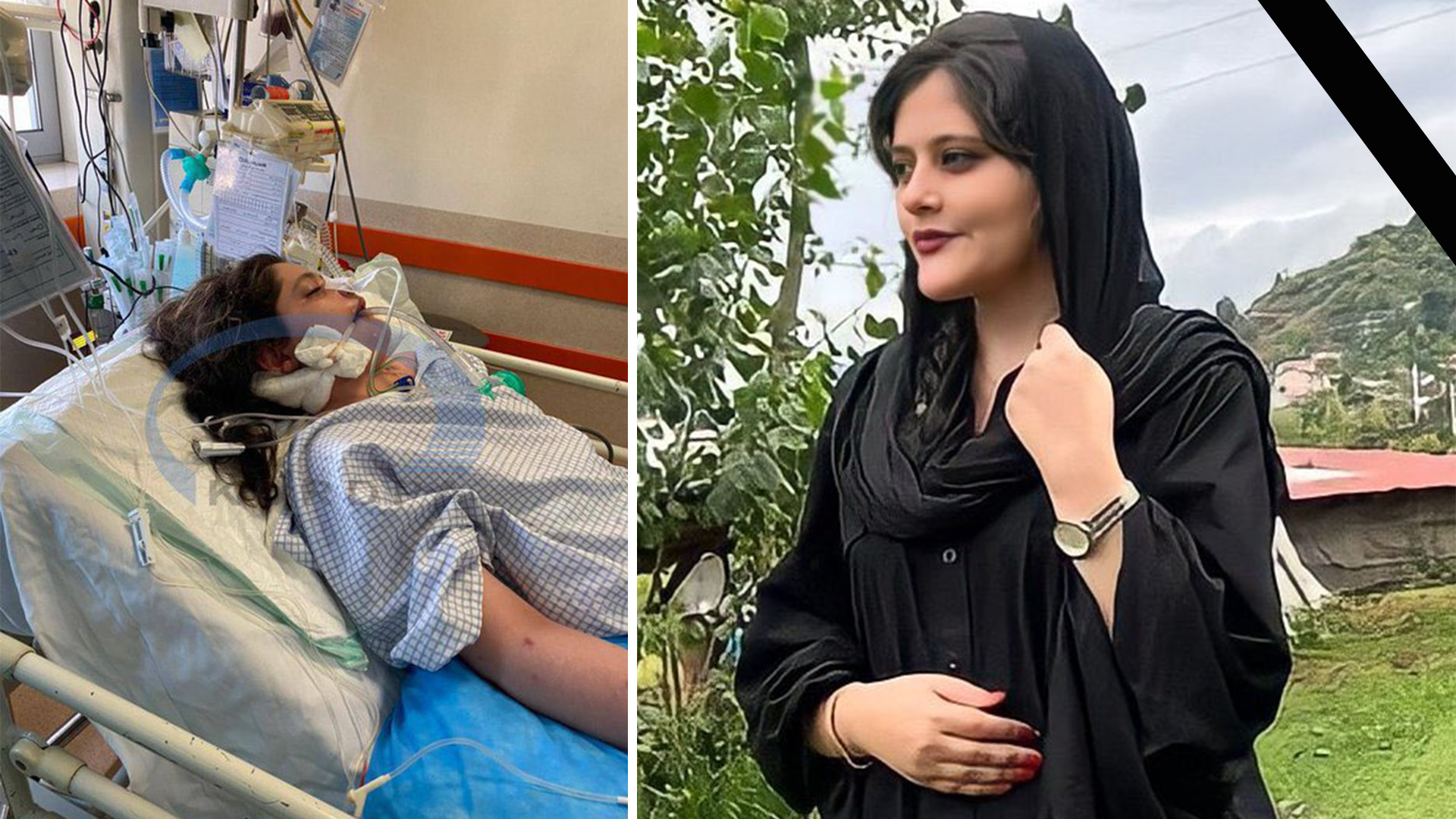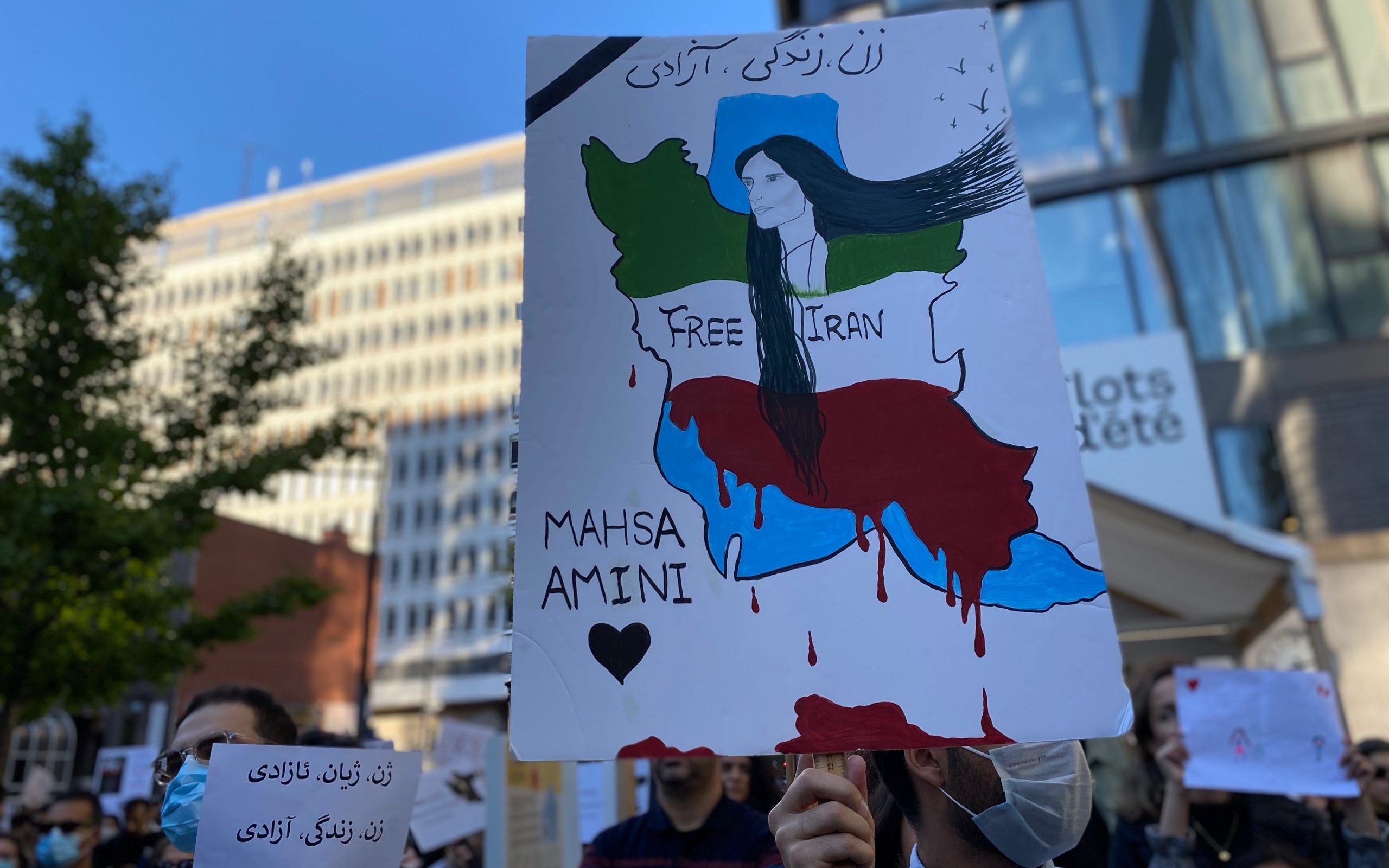Mahsa Amini: The Spark That Ignited Iran's Uprising
Table of Contents
Who Was Mahsa Amini? A Brief Biography
Mahsa Amini, also known by her Kurdish name Zhina Amini, was a 22-year-old woman from Saqqez, Kurdistan Province, Iran. Her life, though tragically cut short, became a beacon for human rights and women's liberation movements globally. Before her fateful trip to Tehran, Mahsa was an ordinary young woman, visiting the capital with her family. Her story is particularly poignant because it highlights how quickly an everyday activity can turn into a life-altering, and in her case, life-ending, confrontation with state authority in Iran. Her background as a Kurdish woman also adds another layer to her story, as ethnic minorities in Iran often face additional layers of discrimination and repression. While specific biographical details about Mahsa Amini's early life are limited, her identity as a young, vibrant individual who simply sought to live freely under oppressive laws has resonated deeply with millions. Her death was not just a personal tragedy but a collective wound for a society yearning for change.| Detail | Information |
|---|---|
| Full Name | Mahsa Amini (also Zhina Amini) |
| Date of Birth | Circa 2000 (Age 22 at time of death) |
| Place of Birth | Saqqez, Kurdistan Province, Iran |
| Date of Death | September 16, 2022 |
| Cause of Death | Died in custody; official cause cited pre-existing conditions, but widely disputed as due to physical violence/torture. |
| Nationality | Iranian (Kurdish ethnicity) |
The Fateful Arrest: A Violation of Freedom
On September 13, 2022, Mahsa Amini was visiting Tehran with her family when she was stopped by the Guidance Patrol, Iran's religious morality police. Her alleged offense was not wearing her hijab in accordance with government regulations. In Iran, women are legally required to cover their hair and wear loose-fitting clothing in public, a mandate that has been enforced with varying degrees of strictness since the 1979 Islamic Revolution. The morality police are tasked with ensuring compliance with these and other Islamic codes of conduct. The arrest of Mahsa Amini was not an isolated incident; countless women in Iran face harassment, fines, and detention for similar alleged violations daily. However, what transpired after her arrest set her case apart. She was taken to a "re-education" center, a common practice where individuals are lectured on proper Islamic dress and behavior. What exactly happened inside that center remains a subject of intense dispute and international condemnation. Eyewitness accounts and reports from her family suggested she was beaten, leading to severe injuries. Iranian authorities, however, denied any wrongdoing, claiming she suffered a sudden heart attack due to pre-existing conditions. This official narrative was met with widespread skepticism, fueling public anger and distrust.Death in Custody: A Nation's Outcry
Three days after her arrest, on September 16, 2022, Mahsa Amini tragically died in custody. Her death immediately triggered a massive wave of unrest across the Islamic Republic of Iran. The news of a young woman dying under such circumstances, particularly after being apprehended by the morality police, ignited a firestorm of outrage. The image of her lying comatose in a hospital bed, followed by reports of her passing, galvanized a population already simmering with discontent over economic hardship, political repression, and social restrictions. The international community swiftly reacted to the news. A United Nations investigation later stated that Iran was responsible for the "physical violence" that led to Mahsa Amini's death. This statement directly contradicted the Iranian government's claims and lent significant weight to the public's belief that she had been subjected to brutality while in police custody. Her death became a stark illustration of the consequences of the country's mandatory headscarf laws and the heavy-handed tactics of its ruling theocracy. The public reactions were swift and visceral, ranging from widespread mourning to immediate calls for justice and accountability.The Genesis of a Movement: "Woman, Life, Freedom"
The death of Mahsa Amini on September 16, 2022, did not just spark protests; it ignited a revolutionary movement. The scale of the protest movement that erupted was unprecedented in recent Iranian history. From her hometown of Saqqez to the bustling streets of Tehran, and extending to cities and towns across the country, Iranians poured onto the streets. The core slogan of the movement, "Woman, Life, Freedom" (Jin, Jiyan, Azadi), encapsulated its multifaceted demands, linking women's rights to broader calls for political and social liberation. The protests were characterized by acts of defiance, particularly by women who publicly removed and even burned their headscarves, a direct challenge to the state's authority. These acts of rebellion resonated deeply, symbolizing a rejection of compulsory hijab and the patriarchal system it represents. The movement quickly transcended the issue of the hijab, evolving into a broader demand for fundamental human rights, an end to systemic corruption, and a call for a more democratic future for Iran. The widespread participation, especially among youth and women, signaled a profound shift in Iranian society's willingness to openly challenge the regime.A Nationwide Uprising Against Repression
The civil unrest and protests against the government of the Islamic Republic of Iran, directly associated with the death of Mahsa Amini in police custody, began on September 16, 2022, and continued well into 2023. These demonstrations were not confined to a few major cities but spread rapidly, indicating a nationwide frustration with the prevailing repression and inequality. University students, high schoolers, artists, and workers from various sectors joined the movement, creating a diverse coalition demanding change. The protests saw unprecedented levels of solidarity, with people from different social strata and ethnic backgrounds uniting against a common adversary. While the immediate trigger was Mahsa Amini's death and the mandatory hijab laws, the underlying grievances were much deeper, encompassing decades of economic mismanagement, political oppression, and a lack of social freedoms. The movement was a powerful expression of the Iranian people's desire for self-determination and dignity.The Brutal Crackdown and Its Aftermath
The Iranian authorities responded to the protests with brutal repression. Security forces employed live ammunition, tear gas, and mass arrests to quell the demonstrations. Thousands of protesters were detained, and many faced severe sentences, including execution. The violent suppression of these demonstrations left an indelible mark on Iranian society, with countless families mourning lost loved ones or dealing with the trauma of imprisonment and torture. Figures like Nika Shahkarami and Neda Agha-Soltan (from earlier protests) became additional symbols of the regime's brutality, their stories amplifying the cries for justice. Despite the severe crackdown, which reportedly caused the protests to dwindle or die down by the spring of 2023, the spirit of resistance did not vanish. The police crackdown that followed the initial surge of protests continues today, with authorities maintaining a tight grip on dissent. However, the sheer scale and intensity of the Mahsa Amini protests demonstrated the deep-seated desire for change and the immense courage of those who stood up against the regime.Official Denial vs. Public Reality
In the face of overwhelming public anger and international scrutiny, Iranian regional government officials attempted to deny the ongoing unrest was directly linked to Mahsa Amini's death. For instance, reports indicated that officials tried to frame protests at the energy sector, such as the Assaluyeh plant, as disputes over wages rather than a response to Amini's passing. Similarly, Iran's state news agency, IRNA, reported that the Abadan refinery was working normally and denied any strikes related to the protests. These official narratives, however, starkly contrasted with the widespread evidence of civil unrest and the explicit chants and slogans heard during demonstrations. The government's attempts to downplay or misrepresent the nature of the protests further eroded public trust and highlighted the disconnect between the ruling establishment and the aspirations of its people. The public understood that while economic grievances were certainly present, the spark that ignited the nationwide movement was undeniably the death of Mahsa Amini and the broader issues of freedom and human rights.An Indelible Mark: Two Years On
As the second anniversary of Mahsa Amini's death approaches, the impact of the protests she inspired continues to reverberate through Iranian society. The brutal repression against women has only continued in the two years since her death in morality police custody sparked nationwide protests. Videos still surface on social media showing Iran's morality police aggressively confronting women and girls over dress codes. This persistence of state violence against women underscores the ongoing struggle for basic freedoms. Yet, despite the crackdown, a quiet but significant shift is observable on the streets of Iranian cities. It's becoming more common to see a woman passing by without a mandatory headscarf, or hijab. This act of defiance, though risky, signifies a growing resistance to the mandatory dress code and a refusal to be intimidated. It's a testament to the enduring legacy of Mahsa Amini and the bravery of Iranian women who continue to push the boundaries of state control. The movement, though less visible in large-scale street protests, has undoubtedly fostered a new level of awareness and determination among the populace. The unexpected tragedy in Iran has left an indelible mark, fundamentally altering the social fabric and the relationship between the people and the state.Global Solidarity and Persistent Challenges
The protests in Iran garnered significant international attention and solidarity. Demonstrations were held worldwide, including a notable solidarity demonstration in Melbourne in September 2022, among many others. These global acts of support highlighted the universal appeal of the "Woman, Life, Freedom" movement and put pressure on the Iranian government to address human rights concerns. International organizations and governments condemned the crackdown and called for accountability for Mahsa Amini's death and the subsequent violence against protesters. However, the challenges persist. Iranian women continue to face violence if they violate the strict dress codes, and the broader fight for human rights and democratic reforms remains an uphill battle. The authorities maintain their stance on mandatory hijab, and the judiciary continues to hand down harsh sentences to those deemed to be challenging the system. The international community's role in sustaining pressure and supporting human rights advocates within Iran remains crucial.The Unfolding Future: A Society in Flux
The death of Mahsa Amini has irrevocably changed the landscape of Iranian society. While the large-scale protests may have subsided, the underlying discontent and the demand for change have not. The increasing number of women openly defying the mandatory hijab, despite the risks, indicates a shift in social norms and a quiet but persistent form of resistance. This phenomenon suggests that the authorities face a growing challenge in enforcing laws that are increasingly seen as illegitimate by a significant portion of the population. The legacy of Mahsa Amini is not just about her death, but about the awakening it triggered. It has empowered a generation to openly question and challenge the system, fostering a sense of collective identity and purpose among those yearning for freedom. The future of Iran will undoubtedly be shaped by the ongoing struggle between state control and the persistent demands for greater liberty and human dignity, with Mahsa Amini's name serving as a constant reminder of what is at stake.The Enduring Legacy of Mahsa Amini
Mahsa Amini's name has become synonymous with the struggle for freedom and human rights in Iran. Her death, a tragic consequence of the state's oppressive policies, unexpectedly ignited a powerful movement that exposed the deep fissures within Iranian society. The "Woman, Life, Freedom" uprising, sparked by her passing, fundamentally challenged the ruling establishment, pushing for an end to mandatory hijab laws, systemic inequality, and the authoritarian rule of theocracy. While the immediate, visible street protests may have dwindled, the impact of Mahsa Amini's sacrifice and the subsequent crackdown has left an indelible mark. It has emboldened a new generation of Iranians, particularly women, to continue their fight for dignity and self-determination, often through subtle but persistent acts of defiance. The world continues to watch, remembering Mahsa Amini not just as a victim, but as the spark that illuminated a nation's longing for fundamental change. The story of Mahsa Amini is a powerful reminder of the human cost of repression and the enduring spirit of those who dare to dream of a more just and free society. Her legacy continues to inspire, both within Iran and across the globe, urging us to remain vigilant and advocate for human rights wherever they are threatened. What are your thoughts on the ongoing situation in Iran and the legacy of Mahsa Amini? Share your perspectives in the comments below. If you found this article insightful, please consider sharing it with others to raise awareness about this critical human rights issue.- Vegas Foo
- Jameliz Onlyfans
- Aitana Bonmati Fidanzata
- How Tall Is Al Pacino In Feet
- Aishah Sofey Leaks

The West Is Misreading the Mahsa Amini Protests in Iran | WPR

Call for public mourning after the brutal murder of the…

Iran’s Mahsa Amini: Montrealers protest her death | CityNews Montreal